The most delicious Greek Christmas butter cookies have the name kourabiedes (κουραμπιέδες). These little melt-in-the-mouth snowballs are exactly what you are looking for from Christmas cookies and they are the ultimate festive sweet. We make kourabiedes not only on Christmas but in many other festive times like baptisms (Christenings) and weddings in Greece.
Their appearance, flavor, and aroma make kourabiedes irresistible for the Holiday table. They have a lot of variations between households and regions, mostly between flavoring. Every family has its own recipe, tricks, and secrets for kourabiedes. This is my family’s recipe and the one I grew up with. Sweet, soft, and crumbly, with almond crunch, they are the perfect Christmas treat.
I remember my mom making them and the whole house was smelling heavenly. I used to lick the icing sugar first (sugar rush) as a child, and then eat the cookie.
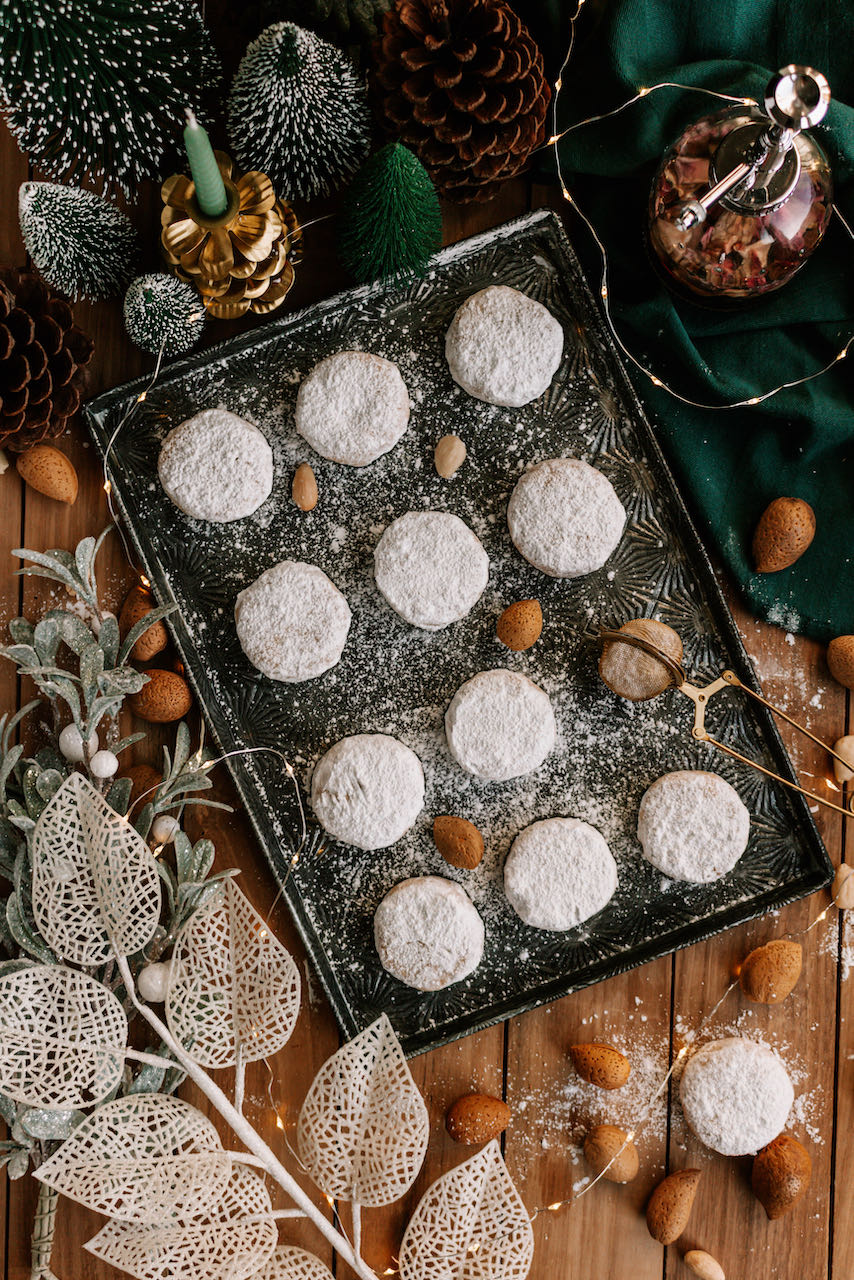
What are Kourabiedes?
Kourabiedes or Greek butter cookies or Kavala cookies are a tender, kind of shortbread, filled with almonds and dusted with icing sugar.
The origin of kourabies is possibly Persian, where it first made its appearance in the 7th century. A recipe for a similar shortbread cookie but without almonds exists in the Arabic cookbook Kitab al-Ṭabīḫ from the 10th century.
Kurabiye appeared in Ottoman cuisine in the 15th century and it is well known in the cuisines of Middle Eastern, Maghreb, Egypt, Greece, Cyprus, Turkey, and the Balkans with various different forms and recipes.
Its Greek name derives from the Persian Qurabiya or Turkish Kurabiye which literally means dry (kuru) biscuit (biye).
Greek refugees from Karvali in Cappadocia, Asia Minor, arrived in Kavala Greece in 1924 and established Nea Karvali. They brought with them the recipe and today the most famous kourabiedes in Greece are named Kavala or Neas Karvalis.
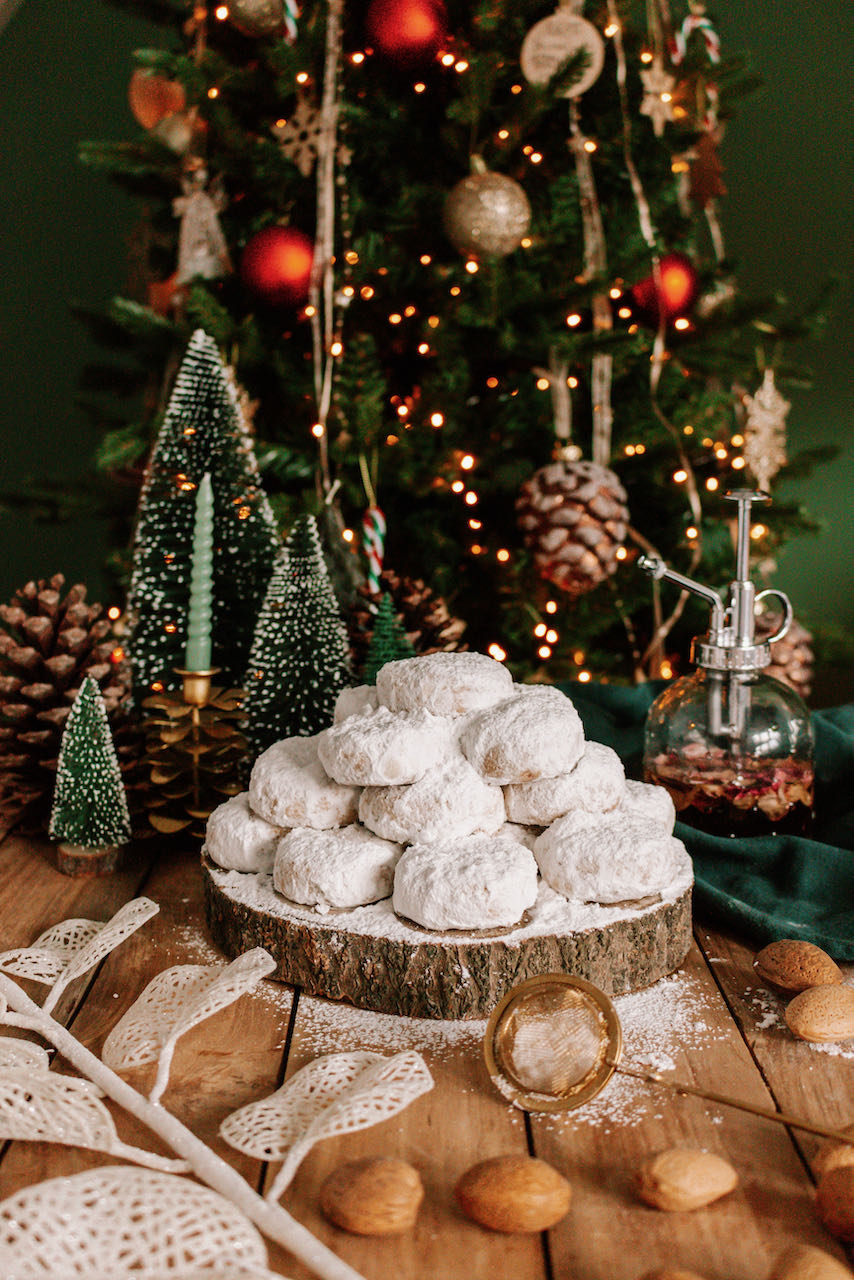
Ingredients for the Greek Butter Cookies
Butter: Good quality butter and its clarification is the most important ingredient for this recipe. Use butter made with sheep's milk to add a crumbly texture to the cookies. Butter made with cow's milk adds a fluffy, softer texture. I am using ghee.
Almonds: I prefer to peel and roast my almonds so I always go for raw. If you want to save time buy already whole roasted almonds without salt. Almonds can be used skin on or off if you like the color to be as white as possible. Chop the almonds as coarsely or finely as you like.
Sweetener: Powder, icing, or confectioners sugar is very important for this recipe. It coats the cookies after baking and gives them a snowball appearance. A small amount is also used in the cookie dough. Use erythritol icing sugar as a substitute if you don't want to affect your glucose or insulin levels. Another alternative is stevia. Erythritol is not as sweet as powdered sugar (70% sweetness) but stevia is much sweeter (250% sweeter than sugar).
Flavorings: Depending on the family recipe and region in Greece there are different flavor profiles in kourabiedes. Brandy or cognac, ouzo, mastic, bitter almond liqueur, rose water, and vanilla are some of them. Pick your favorite and add a little just to make them extra delicious.
Leavening agents: Baking soda is common. Baking powder or cream of tartar can be used at a 1:1 ratio to create the perfect crumble and texture.
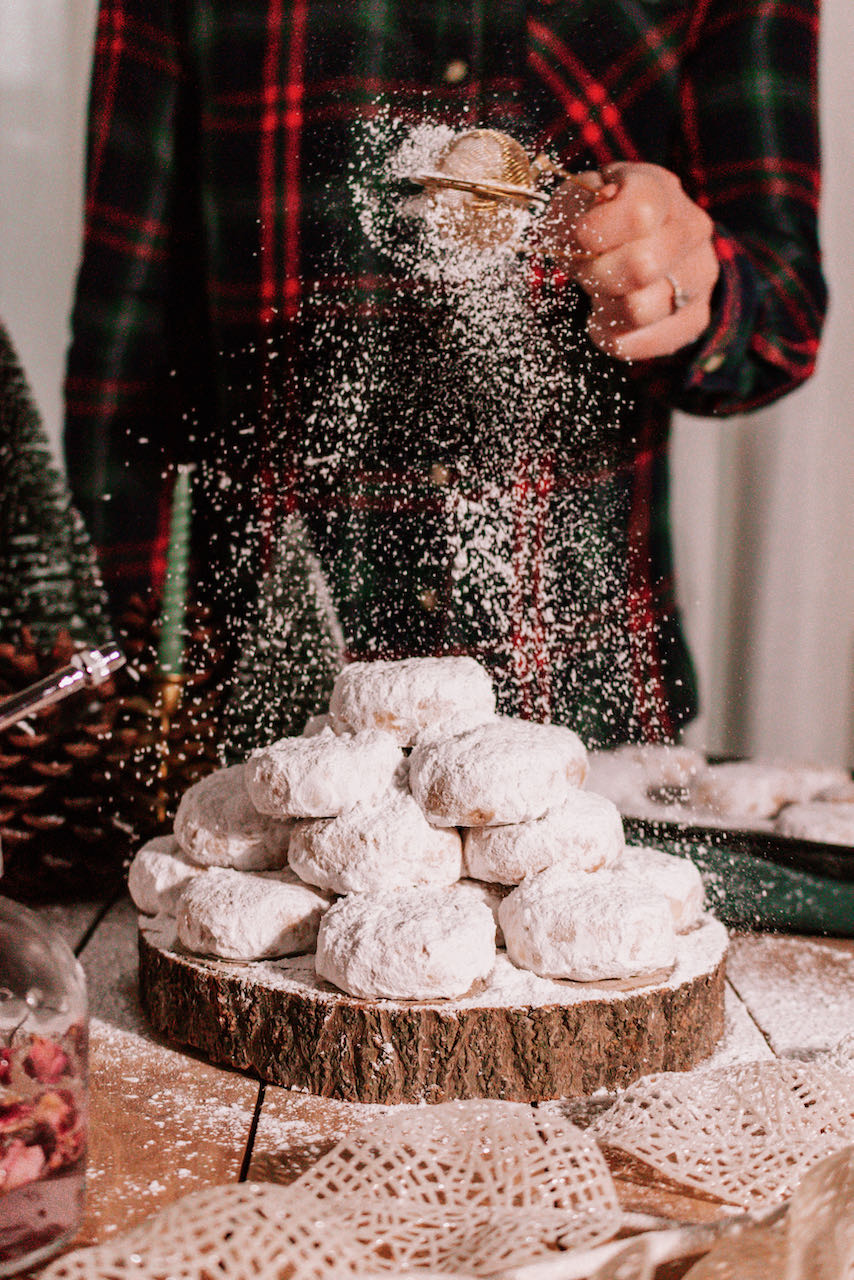
Tips & tricks
Kourabiedes are very crumbly and soft when they are hot so try to lift them as carefully as possible to avoid breaking them.
Be careful not to overcook the cookies, they can become bitter. Bake them until they have a light golden tint.
Use good quality clarified butter, because it is the key ingredient to get a great flavor.
For fluffy kourabiedes it is essential that the mixture is cold so that it doesn’t spread. Be sure to place the cookies into the fridge for 5 to 10 minutes before baking.
Beat the butter for 10 minutes. It is ready when it turns from pale yellow to white and this process is what makes the cookies so tender.
Gluten-free option: Replace the flour with 1 to 1 cup gluten-free baking (all-purpose) flour.
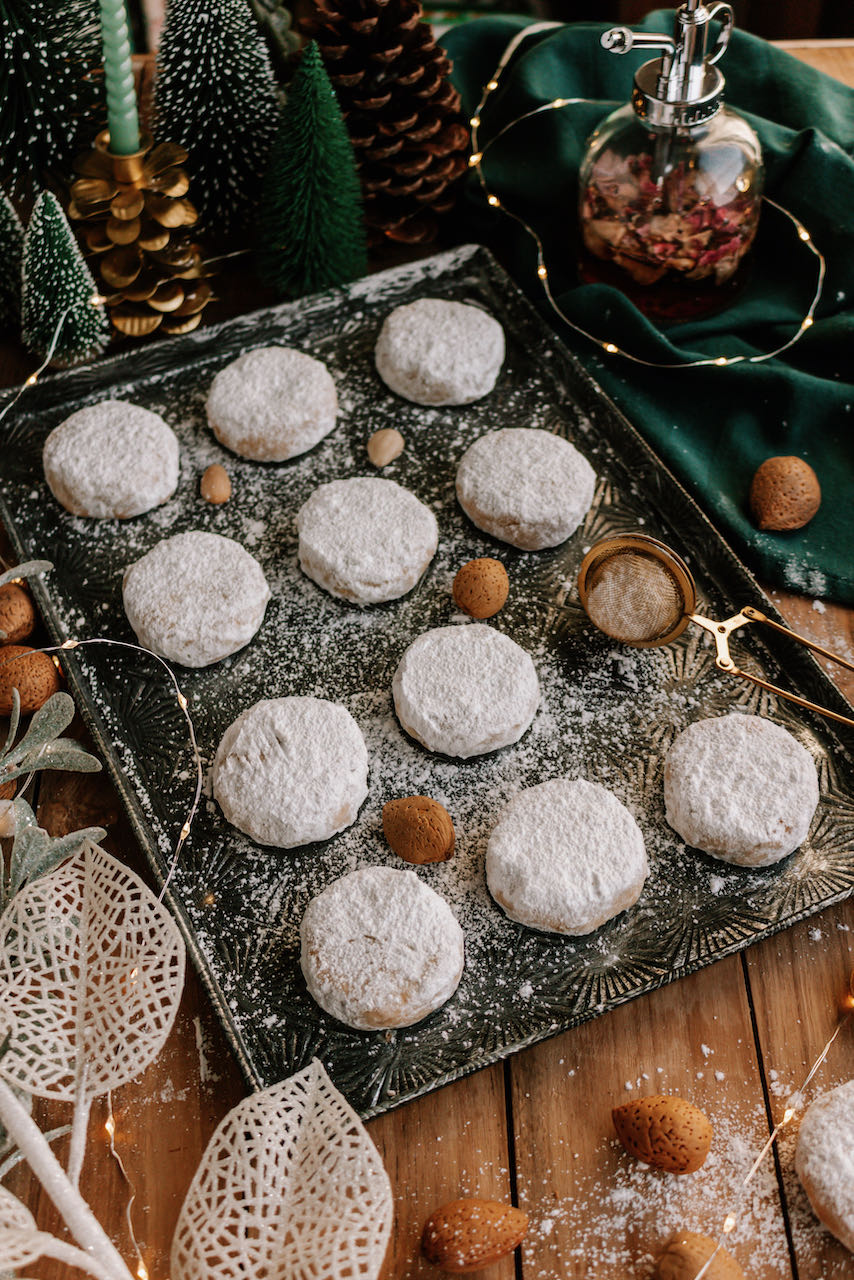
How to serve Kourabiedes
Kourabiedes are commonly shaped like disks, balls, crescents, or oblong shapes. Use cookie cutters to create stars, trees, etc, and make them more festive.
Typically, kourabiedes are stacked in the shape of a pyramid. If you want to make serving easier, and let's be honest less messy, because of the icing sugar, place them individually into cupcake liners.
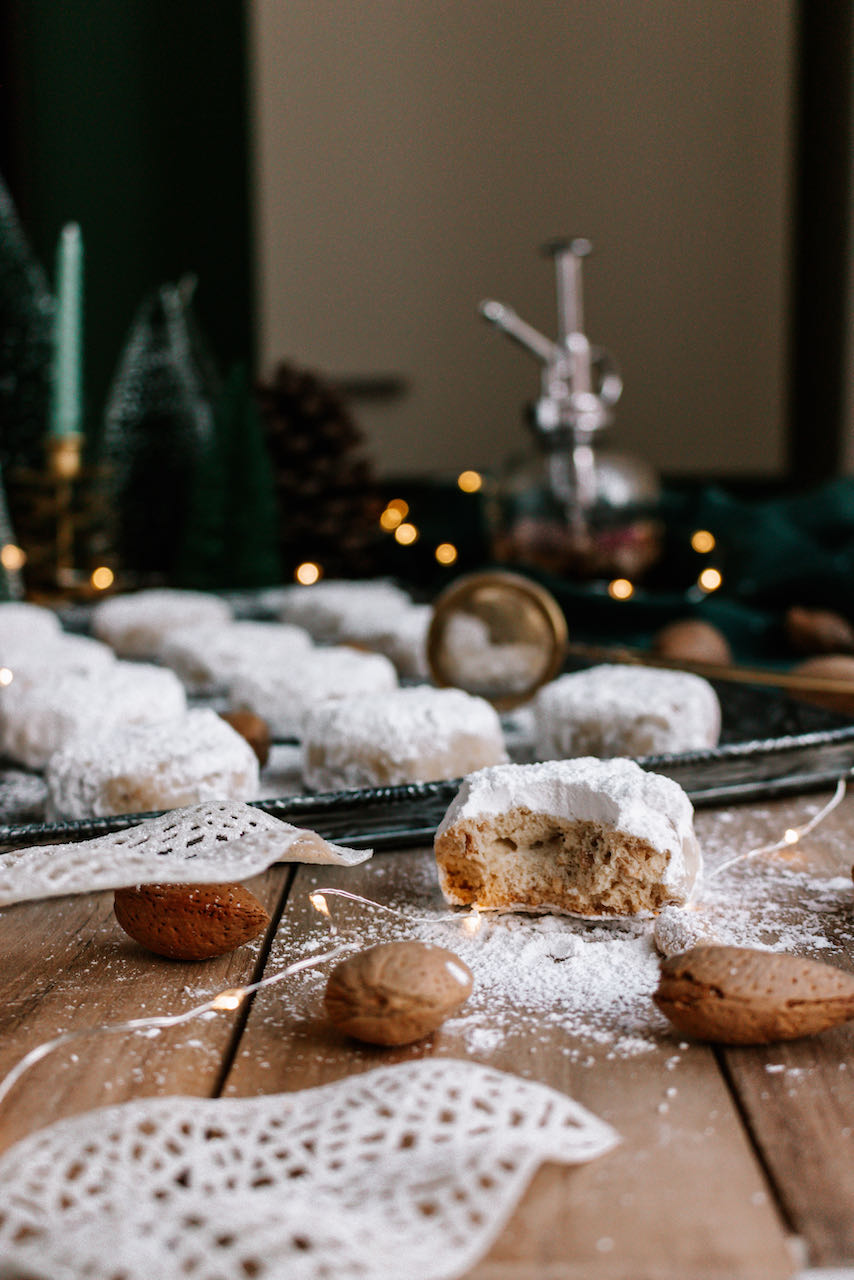
How to store Greek butter cookies
Store the kourabiedes in an airtight container or cover them with plastic wrap, after they cool completely, at room temperature. They can last up to 6 weeks.
Freeze them in an airtight container, placing parchment paper in between layers, after they cool completely and without the addition of powdered sugar, for up to six months. Coat them with icing sugar after they thaw or just before serving.
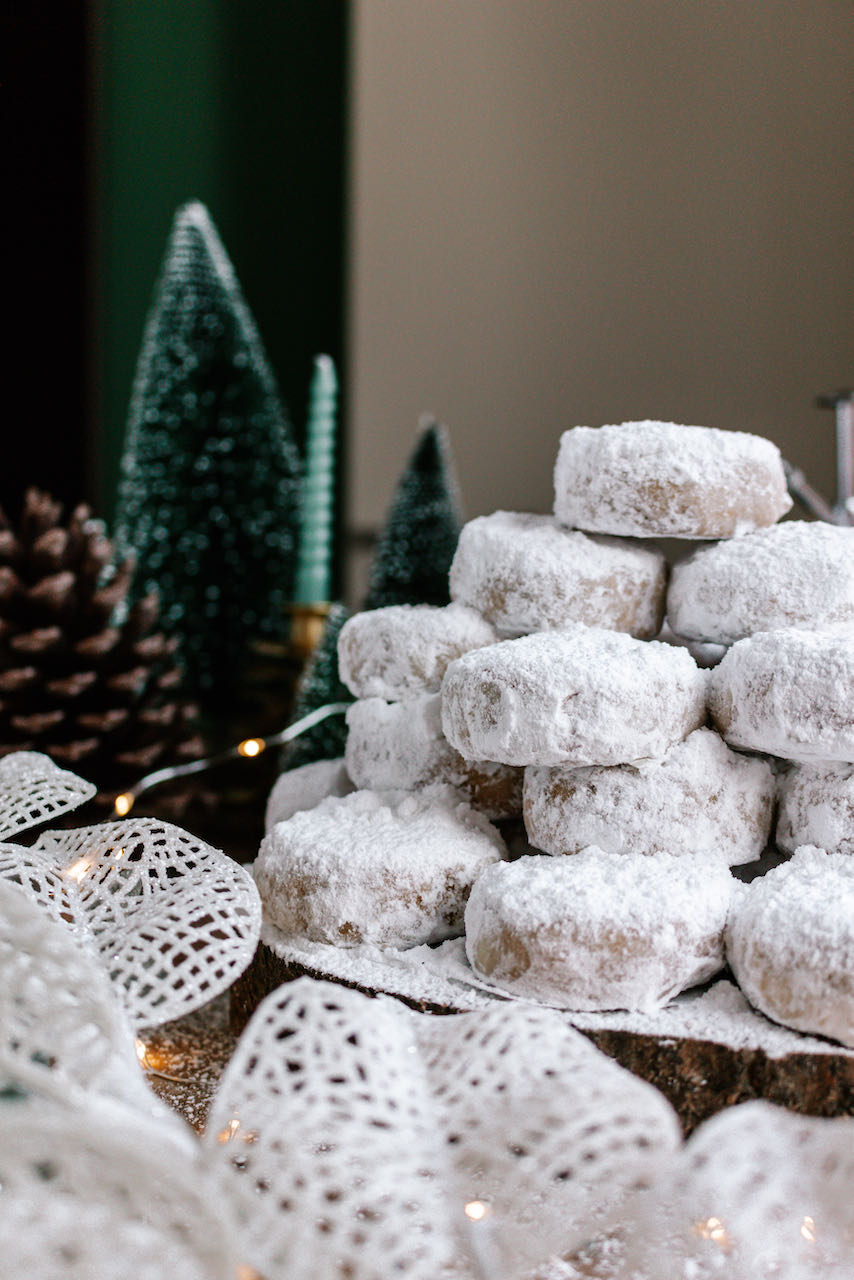
Other Winter Holiday Favorites
Classic Greek recipes that we love during the Winter Holidays:
Recipe
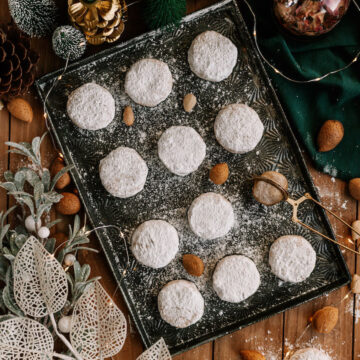
Kourabiedes (Greek Butter Cookies)
Ingredients
- 250 g/1 cup clarified unsalted butter or ghee room temperature
- 32 g/4 tbsp powdered sugar
- 1 large egg yolk
- ½ teaspoon baking powder
- ¼ teaspoon baking soda
- 1 tablespoon cognac or brandy
- ½ teaspoon vanilla extract
- 200 g/1⅖ cups unsalted roasted almonds
- 400 g/2½ cups all-purpose flour
- 200 g/1½ cups powdered sugar to dust
- 1 teaspoon rose water
Instructions
- Place the almonds into a food processor and pulse 3 to 4 times until they become medium-small pieces.
- In the mixer bowl, add the butter and beat it with the paddle attachment, until white and fluffy.
- Add the powdered sugar and continue with the beating until combined.
- Pour the vanilla, egg yolk, and cognac into the mixture and continue beating until mixed.
- Add the chopped almonds to the mixture and beat until combined.
- In a medium bowl, sieve the flour with the baking powder and baking soda.
- Add the flour in batches into the mixture. The mixture should be soft enough but not sticky.
- Shape the dough into balls about 30g (1oz) each and press slightly down to the center.
- Place the kourabiedes into the fridge, which helps to keep them fluffy.
- Preheat the oven to 180°C (350°F) and line a large baking tray with parchment paper.
- Place the kourabiedes on the tray, making sure that they have some space apart to spread, about 1 cm (0.4 inches), and bake for 25 to 30 minutes, until lightly golden.
- Remove from the oven. Let them cool into the tray for 5 minutes, spray them with the rose water, and then roll them into sieved icing sugar.
- Using your fingers, transfer them carefully on a cooling wire rack.
- Arrange them as a tower on a platter, when cooled, and dust with more powdered sugar.
- Enjoy 🙂
Notes
Nutrition facts
Servings: 1 (38g) | Calories: 182kcal | Carbohydrates: 19g | Protein: 3g | Fat: 10.6g | Saturated Fat: 4.6 g | Trans Fat: 0.3g | Cholesterol: 24mg | Sodium: 13mg | Potassium: 73mg | Fiber: 0.8g | Sugar: 7.94g | Vitamin A: 216IU | Vitamin C: 0mg | Vitamin E: 1.81mg | Calcium: 26mg | Iron: 0.9mg
Have you tried this recipe?
Spread the love and mention @foodathlon_ or tag #foodathlon on Instagram
Leave a comment and star rating ★ in the section below

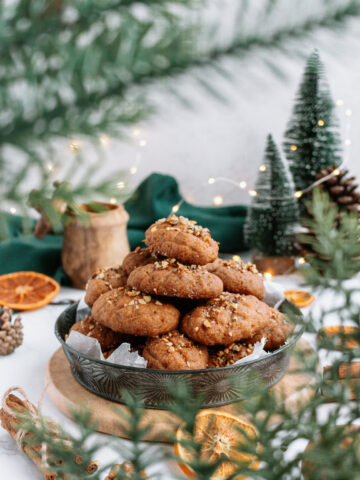
Leave a Reply